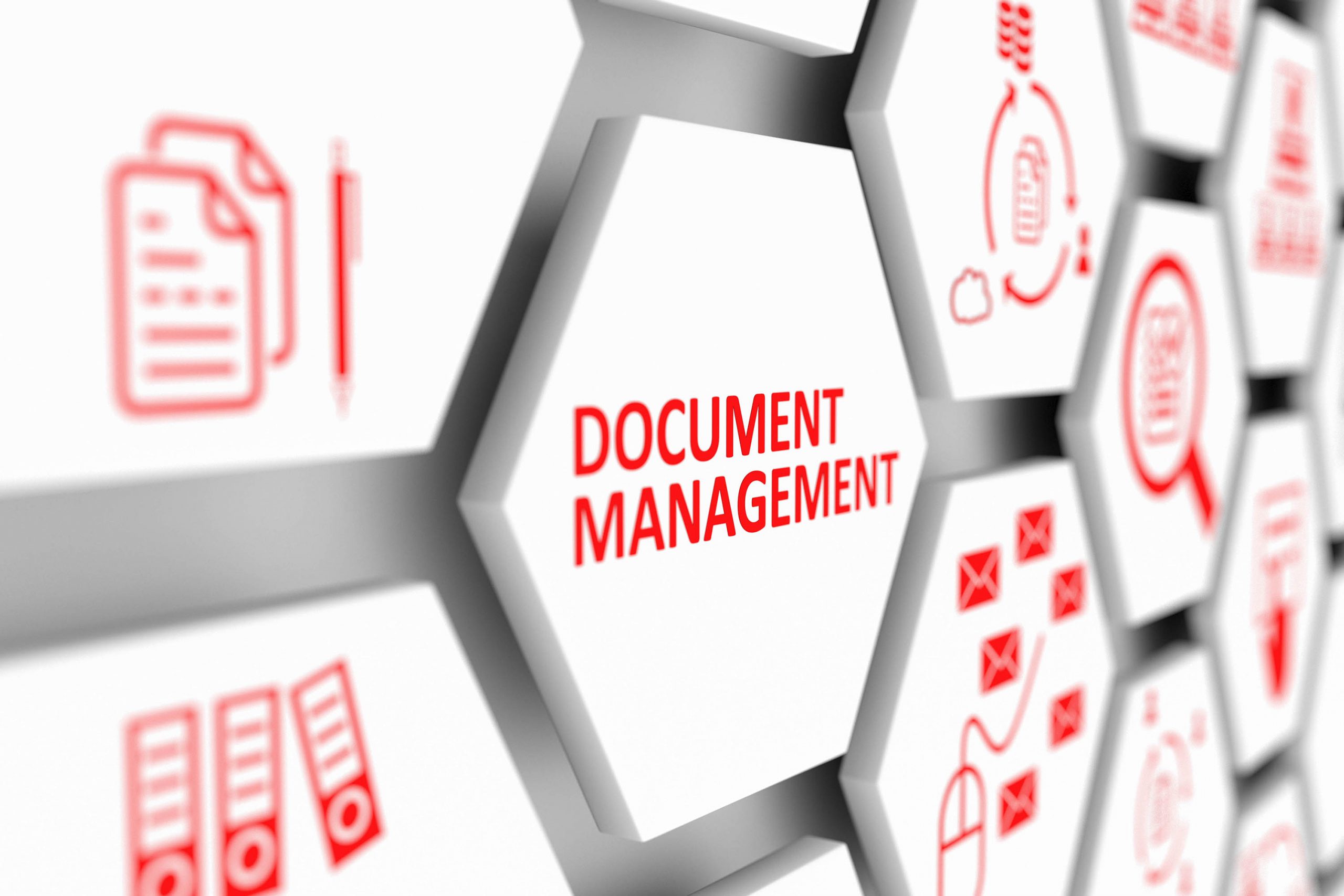Foundations for an Evolution in Enterprise Content Management and Digital Asset Management
An exploration of Content Management Systems (CMS) and Digital Asset Management (DAM) and their Evolution
Today as the complexity of communications increases, Content Management System platform (CMS) management, Digital Asset Management platform (DAM) management, and Enterprise Content Management have become a beast of a challenge, especially as your organization increases in size and complexity. One of the main challenges with how content management systems, digital asset managers, and enterprise content management systems are set up today is in their flexibility to handle massive amounts of data and the inherent redundancy, copies, and versions that are created by a massive workforce across many departments.
To understand where these technologies are moving in the future lets first explore their intended functions.
What is a Content Management System (CMS)?
A Content Management System (CMS) is a software application or software platform that is designed to manage the creation and modification of digital content. One of the most common uses for a CMS is as a web content management platform that is used to build websites. The system is equipped to catalog and organize text, graphics, photos, video, audio, maps and program code.

CMSs are designed with the intention of enabling CMS integrations with other systems that may be used in the course of business. CMS integration examples could include feeding content to a webpage, a mobile application, an email campaign or other web based types of communication. A CMS is typically owned and managed by the marketing team within an organization and more complex systems require a CMS Manager to administer the tool.
The best CMS platforms do not require any official CMS training, however especially for larger organizations failure to set up the system properly in the beginning can create a content disaster that is time consuming and expensive to recover from down the line.

In summary a Content Management System is supposed to make managing content easy, but struggles when it comes to balancing organization and time involvement. CMSs require experienced people to tag and organize content, and is typically only used for digital engagement.
Content Management Systems do not exist alone. A CMS typically represents the final stage in the journey before publishing a piece of digital content, but a huge amount of work is required before that content is ready to see the light of day, and this is where the Digital Asset Manager comes into play.
What is a Digital Asset Manager (DAM)?
Digital asset management also called a DAM is a system that collects, stores, shares and organizes all of the digital assets an organization uses and owned in a central location. The goal of a Digital Asset Manager is to make it easy for creatives within an organization to easily find and access their assets to create content. Typically assets come in the form of text content, images, videos, audio, documents and other media.

As your organization grows and more content is created, the number of assets your team uses to create that content will increase substantially. In the enterprise communication and b2b sales spaces alone a typical piece of content will have at minimum 20 unique assets. These assets could be the test responses to the RFP, the fancy diagram in the marketing brochure, the team photos on the recruiting page, etc. Imagine the number of business documents your organization creates in a year and multiply it by that minimum 20 assets. That huge number is why a DAM is valuable.
The Importance of Digital Asset Management
The Digital Asset Manager is focused on making it easy to organize all of the assets that are used for content creation. DAMs set out to organize assets in a single location and make it easy for find content through tagging and search capabilities. DAMs also make sharing of assets easier with 3rd parties for improved Reseller Enablement and Strategic Partner Enablement.

The use of a DAM should empower an employee to spend more time working on what they are good at, and less time trying to find the assets they need to create their content.
Challenges of Digital Asset Managers and Content Management Systems
While there is huge value in what the DAM and CMS platforms bring to the table in terms of organization, they also have some significant challenges in the form of isolated information silo.
The downside to an information silo is that whatever exists within that platform is isolated from other solutions, and this makes collaboration and sharing of content much harder, and if there is not some type of API or other connection to share content between applications then it is very easy for content to be duplicated across silos. Once the content is duplicated in different systems, it doesn’t matter how fancy your DAM or CMS version control system is, it cannot version control a separate information silo. Fast forward 6 months and a new employee has joined your team, how are they going to be able to know where to find the correct version of the document, is it in the first silo or the second silo? Once they do find it, is it the right version? Did messaging change since the document was last updated?

All that being said, your tech stack should not require extensive CMS development, DAM development, or ECM development to be integrated into a streamlined application solution for your employees to use. These custom development CMS, DAM, or ECM solutions are expensive and a huge time sink, because the applications will update and evolve at different rates, and each time something is changed in one system, it can break the connections you invested so much time setting up.
This is why having a unified foundation out of the box is so critical.
The Attempt at a Solution through Enterprise Content Management
Enterprise Content Management ECM is designed to support a large number of users across an enterprise environment by integrating document management, content management, digital asset management and record retention. However, a collection of solutions under a single umbrella does not alone lead to better information capture and organization. Information Capture is not enough to ensure it is easy to find and access, share and collaborate to improve, and leverage for business purposes.
Current ECM platforms still manage content at the document level. There is not enough granularity at this level to offer enough flexibility for use. At the document level, silos are still created, they are just not application silos. Instead these content silos are the documents themselves. Imagine a Slide Deck with 2 dozen slides in it. Each of those slides tells part of the story, but another presentation may reuse some of the slides (think company mission statement slide). If you have two documents within your Enterprise Content Management system that both use that slide you now have 2 versions that have to be updated and maintained.

There is such a thing as bad content, and it exists in the form of old outdated and inaccurate content that fell through the cracks. While most good Content Management Systems, Digital Asset Manager, or other Enterprise Content Management Tools have some form of version control, this is not enough when multiple disparate sources upload the same document multiple times, or the old copy is lost or buried within the system.
The other huge challenge with existing systems is that they are highly focused on one type of user, and are typically owned by one department, or tailored in design and functionality for that one department. A sales person just wants to have easy access to the latest greatest product information, the marketer wants to be able to see the evolution of their content strategy over the last 3 years, and the sales ops proposal writer wants to be able to reuse the same great marketing material in part of his proposal talking about the leadership team.
Departments should be able to easily collaborate in a single application that is easy for ALL users and versatile enough to meet all of their unique needs.
The Future of Enterprise Content Management
To achieve optimal results, a digital transformation strategy and process must be developed to connect content and knowledge across your organization and unify. There are great benefits that are brought through the use of a CMS, DAM, or other enterprise content management tool, but the functionality and effectiveness can be boosted by an underlying foundation. The foundational technology should allow for easy granularization of content into modular components. This will reduce redundancy and improve ease of collaboration.

The best solution for the Content Management System, Digital Asset Manager, or Enterprise Content Management Tool problem is to examine the underlying methodology your organization uses for content creation, and leverage a platform that can help facilitate that digital transformation strategy.
The systems should also be versatile enough to the wide range of content that is created within an organization. Account Plans, B2B Sales Documents, RFPs, RFIs, Requirements Matrices, Design Documents, Internal Communication training and notices, and even legal agreements are just a selection of the mass assortment of content pervasive throughout the organization. By applying a strategic communication and digital transformation strategy to these business documents can reduce a significant amount of strain currently applied to your Content Management System, Digital Asset Manager, or other Enterprise Content Management Tool.
Content Strategists can rethink their content design and content strategy by diving deeper into the motivations behind content creation and communications – both internal communications and external communications.

Content creation should be strategic and laser focused, and your CMS, DAM or EMC platform should enable your content creation team to be precise and have a comprehensive view into all of the content within your organization. This is not an impossible task, and the proof is in the history of language. Encyclopedias have been around for hundreds of years, and have been created as a way to catalog and capture important information about the world around us. As a content manager or content strategist within your organization, you can create a “Content Encyclopedia®” that contains all of the information and content relevant to your organization. Just like true encyclopedias which are meant to evolve over time and expand as our knowledge of the world increases, your organization’s “Content Encyclopedia®” will grow, evolve, and improve over time as your organization matures; it’s an iterative process.

The upside to embarking on this business transformation and digital transformation journey is gaining absolute clarity, and huge flexibility in terms of how your organization interacts with information. We’ve already written about the Knowledge Management implications, so this article will only focus on the impacts on Content Management Systems, Digital Asset Managers, and other Enterprise Content Management platforms.

IdeaFORGE® can provide the foundational support needed to function as your organization’s Content Encyclopedia® and feed your existing technology investments. By prioritizing content creation workflow and flexibility, IdeaFORGE® is flexible and versatile enough to meet the information, knowledge capture, and content creation needs of all departments of an organization, not just the marketing team.
IdeaFORGE® allows the organization to build a comprehensive communication strategy and framework that will guide users in the direction the organization and industry are moving, and make it easy for all departments to collaborate and draw on their collective knowledge to grow the business.
IdeaFORGE’s unique design focusing on modular components can allow all users to access the content they need at the right time, regardless of job function. The flexibility and ease of use enables every employee to become a brand ambassador that can create content customized to an individual in any media format. Now your sales team can build a personalized slide deck for their new customer. The marketing team can develop a strategy for communicating unique content to every major industry vertical. The proposal team can draw upon the Content Encyclopedia® that already exists to write their proposals. And new product development can easily capture unique value add messaging that marketing can use to create the positioning required for go-to-market communications success.


